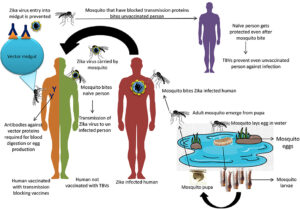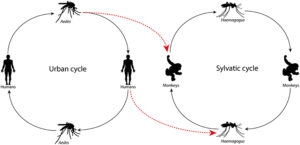Edwards Syndrome, also known as Trisomy 18, is a rare but serious genetic condition that affects the development of a child. This disorder occurs when there is an extra copy of chromosome eighteen in the body’s cells. While the condition is relatively uncommon, its impact on affected individuals and their families is profound. Understanding Edwards Syndrome requires exploring its causes, recognizing its symptoms, and learning about the care options available for those living with this condition.

What is Edwards Syndrome?
Edwards Syndrome is a chromosomal disorder that arises when a baby is born with three copies of chromosome eighteen instead of the usual two. Chromosomes are structures within our cells that contain our genetic material, or DNA. Normally, humans have 46 chromosomes arranged in 23 pairs. In Edwards Syndrome, the presence of an additional chromosome disrupts normal development, leading to a wide range of physical and intellectual challenges.
This condition was first described by Dr. John Hilton Edwards in 1960, and since then, it has been the subject of extensive medical research. Although Edwards Syndrome is present at birth, its effects can vary widely from one individual to another. Some babies may experience severe complications, while others may have milder symptoms. Unfortunately, Edwards Syndrome is associated with a high mortality rate, with many affected infants not surviving beyond their first year of life.
Causes of Edwards Syndrome
The primary cause of Edwards Syndrome lies in the abnormal distribution of chromosomes during the formation of eggs or sperm. This process, known as meiosis, is responsible for ensuring that each egg or sperm cell contains only one copy of each chromosome. However, errors can occur during this process, resulting in an extra chromosome being passed on to the developing embryo.
Types of Edwards Syndrome
There are three main types of Edwards Syndrome, depending on how the extra chromosome is distributed:
- Full Trisomy 18: This is the most common form, where every cell in the body contains three copies of chromosome eighteen. Full trisomy accounts for approximately 95 percent of cases and typically results in the most severe symptoms.
- Mosaic Trisomy 18: In this type, only some cells in the body have the extra chromosome. The severity of symptoms depends on the proportion of affected cells and their location in the body.
- Partial Trisomy 18: This occurs when only part of chromosome eighteen is duplicated. The effects of partial trisomy vary depending on which specific genes are involved.
Risk Factors
Certain factors increase the likelihood of having a child with Edwards Syndrome. Advanced maternal age is one of the most significant risk factors, as the chances of chromosomal abnormalities rise with age. Other potential contributors include environmental factors and genetic predispositions, although these are less well understood.
Symptoms of Edwards Syndrome
Children with Edwards Syndrome often exhibit a range of physical and developmental abnormalities. These symptoms can be detected during pregnancy through prenatal screening or after birth through clinical evaluation. While no two cases are identical, some common features include:
Physical Characteristics
- Low birth weight and small size
- A small head with an abnormally shaped skull
- Distinct facial features, such as a small jaw, low-set ears, and clenched fists with overlapping fingers
- Congenital heart defects, which are present in up to 95 percent of cases
- Kidney and urinary tract abnormalities
- Gastrointestinal issues, including hernias and malformations
Developmental Challenges
In addition to physical symptoms, children with Edwards Syndrome face significant developmental delays. These may include:
- Severe intellectual disability
- Limited motor skills and muscle tone
- Feeding difficulties due to problems with swallowing or sucking
- Delayed growth and milestones, such as sitting up or walking
Associated Health Problems
Due to the widespread impact of the extra chromosome, individuals with Edwards Syndrome are prone to numerous health complications. These may include:
- Breathing difficulties caused by underdeveloped lungs
- Frequent infections due to a weakened immune system
- Neurological issues, such as seizures or hydrocephalus
- Vision and hearing impairments
Diagnosis of Edwards Syndrome
Early detection of Edwards Syndrome is crucial for providing appropriate care and support. Diagnosis can occur during pregnancy or after birth, depending on the circumstances.
Prenatal Screening and Testing
Pregnant women are often offered routine screenings to assess the risk of chromosomal abnormalities. These tests may include:
- Ultrasound: A detailed ultrasound can reveal physical signs of Edwards Syndrome, such as growth restrictions or structural abnormalities.
- Maternal Serum Screening: Blood tests can measure levels of certain proteins and hormones that may indicate an increased risk.
- Amniocentesis or Chorionic Villus Sampling: These invasive procedures involve analyzing fetal cells to confirm the presence of an extra chromosome.
Postnatal Diagnosis
If Edwards Syndrome is not diagnosed before birth, it may be identified shortly after delivery based on physical characteristics and symptoms. Genetic testing, such as a karyotype analysis, is used to confirm the diagnosis by examining the baby’s chromosomes.
Care and Management of Edwards Syndrome
While there is no cure for Edwards Syndrome, comprehensive care can help improve the quality of life for affected individuals and their families. Treatment focuses on managing symptoms, addressing medical complications, and providing emotional and practical support.
Medical Interventions
Children with Edwards Syndrome often require specialized medical care to address their unique needs. This may include:
- Surgical Procedures: Corrective surgeries may be performed to repair heart defects, gastrointestinal obstructions, or other structural abnormalities.
- Respiratory Support: Babies with breathing difficulties may need oxygen therapy or mechanical ventilation.
- Nutritional Support: Feeding tubes or specialized formulas may be necessary to ensure adequate nutrition.
- Medications: Drugs may be prescribed to manage seizures, infections, or other conditions.
Therapies and Support Services
Therapeutic interventions play a vital role in helping children with Edwards Syndrome reach their full potential. These may include:
- Physical Therapy: To improve muscle strength and mobility.
- Occupational Therapy: To enhance fine motor skills and daily living abilities.
- Speech Therapy: To address communication challenges and feeding difficulties.
- Early Intervention Programs: Tailored services designed to support development during infancy and early childhood.
Emotional and Practical Support
Caring for a child with Edwards Syndrome can be emotionally challenging for families. Access to counseling, support groups, and respite care can provide much-needed relief and guidance. Connecting with other families who share similar experiences can also foster a sense of community and understanding.
Prognosis and Long-Term Outlook
The prognosis for children with Edwards Syndrome varies depending on the severity of their symptoms and the presence of associated health problems. Many infants do not survive beyond their first year of life, often due to complications related to heart defects or respiratory issues. However, some children with milder forms of the condition may live longer, particularly those with mosaic or partial trisomy.
For families navigating this journey, it is important to focus on maximizing comfort, promoting development, and cherishing every moment together. Advances in medical care and supportive therapies continue to improve outcomes and offer hope for the future.





